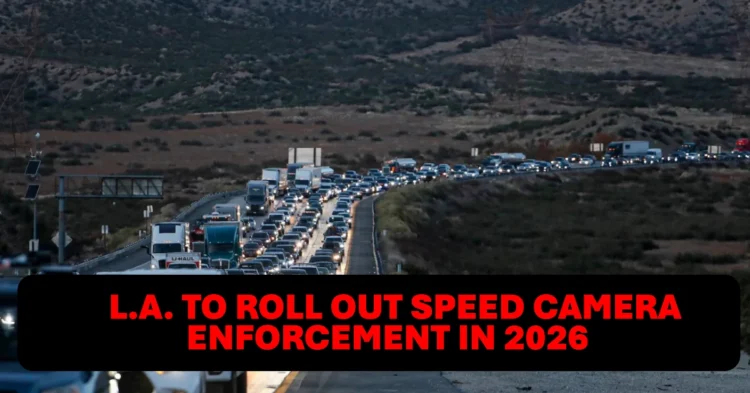In a significant move to reduce traffic-related injuries and deaths, Los Angeles will begin installing speed safety cameras in 2026 as part of a state-approved pilot program. This initiative follows the signing of Assembly Bill 645 in October 2023, which allows six major California cities—Los Angeles, Oakland, San Jose, Long Beach, Glendale, and San Francisco—to deploy automated speed enforcement systems in high-risk areas.
Table of Contents
California’s Bold Step Toward Safer Streets
How the Law Works
Assembly Bill 645 is designed to deter reckless driving by enabling cities to install cameras that automatically record and ticket speeding vehicles. The law represents a shift toward data-driven solutions to address the high number of speed-related crashes on California roads. The camera systems will capture the license plates of vehicles exceeding the speed limit by more than 11 miles per hour. Tickets will be mailed directly to the registered owner.
Fine Structure Based on Excess Speed
Fines under the new system will escalate based on how far over the speed limit a vehicle is traveling:
- $50 for 11–15 mph over the speed limit
- $100 for 15–25 mph over
- $200 for 26–99 mph over
- $500 for driving 100 mph or more
For the first two months after installation, only warning notices will be issued for those driving 11–15 mph over the limit, giving drivers time to adjust to the new enforcement system.
Why Los Angeles Needs Speed Safety Cameras
A Response to Alarming Traffic Fatalities
California consistently ranks among the top states for speed-related traffic fatalities. In 2021, speeding was responsible for 35% of all traffic deaths in the state. In Los Angeles alone, nearly one in four fatal crashes was attributed to excessive speed. This sobering statistic has galvanized city officials and advocates to take decisive action.
Expert Support and Public Demand
According to Damian Kevitt, executive director of the nonprofit Streets Are for Everyone, communities across Los Angeles are asking for stronger safety measures. “There are many communities that are clamoring for this… Their roads are high-injury, high-speed death traps, and they want something that will help save lives,” Kevitt told the Los Angeles Times.
Proven Results from Other Cities
The Los Angeles Department of Transportation (LADOT) supports the move, citing research that shows speed cameras can reduce fatal and serious injury crashes by nearly 20%. The Federal Highway Administration also estimates a 50% reduction in injury crashes where automated speed enforcement is used.
San Francisco Leads the Way
San Francisco was the first of the six cities to act, installing 33 cameras in March 2025. These were strategically placed near school zones, parks, senior centers, and other areas with high pedestrian traffic. Early feedback suggests the program may already be reducing dangerous driving in these zones.
What’s Next for Los Angeles?
While the exact locations of the cameras in Los Angeles have not been announced, the city expects to approve up to 125 sites, focusing on areas with high injury and crash rates. These may include school zones, commercial districts, and intersections with historically high accident rates.
A Vision for Safer Roads
The speed safety camera program reflects a growing recognition that traditional traffic enforcement methods are not enough to tackle the crisis of speeding-related crashes. With technology, data, and community support behind the initiative, Los Angeles hopes to create safer streets for all road users—especially the most vulnerable.
Final Thoughts
The rollout of speed cameras in Los Angeles by 2026 marks a pivotal shift in how the city approaches traffic safety. As residents adapt to this new enforcement tool, the ultimate goal remains clear: to reduce injuries, prevent deaths, and promote responsible driving behavior on some of California’s most dangerous roads.

